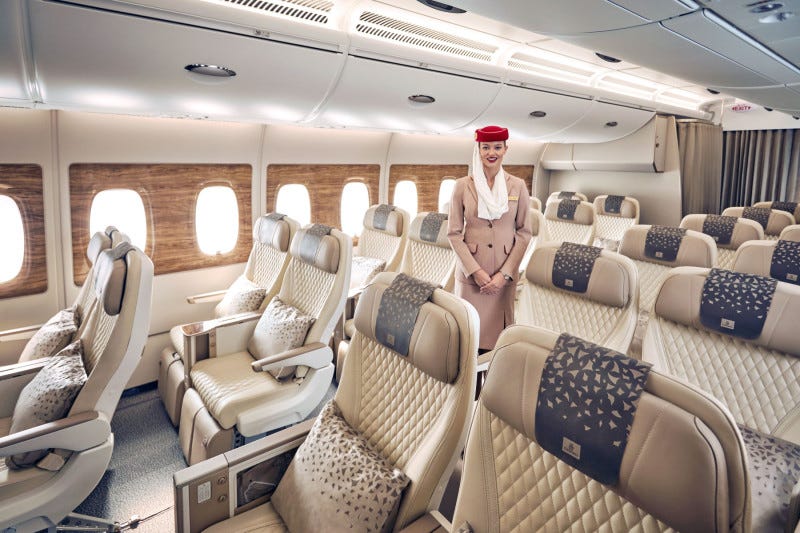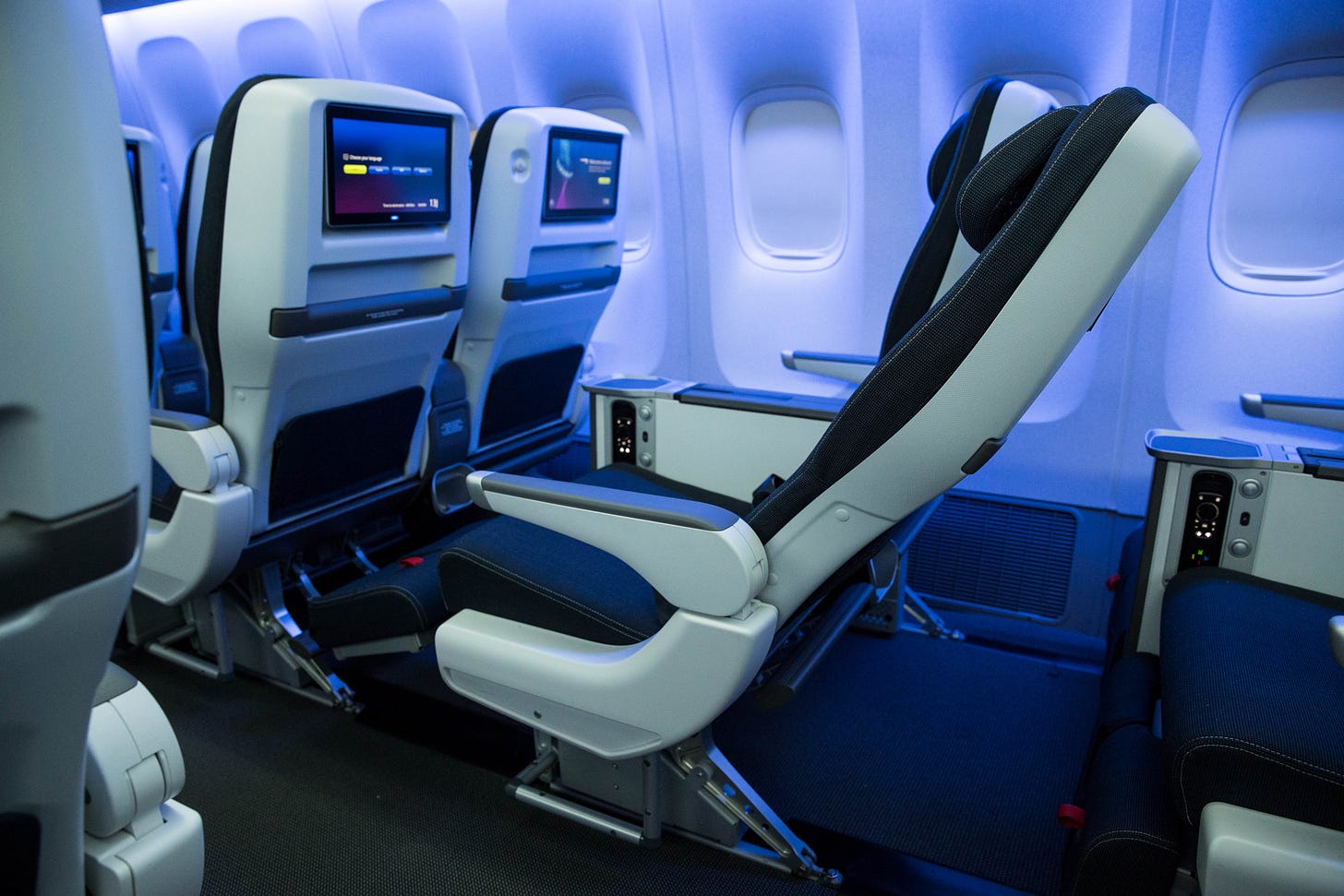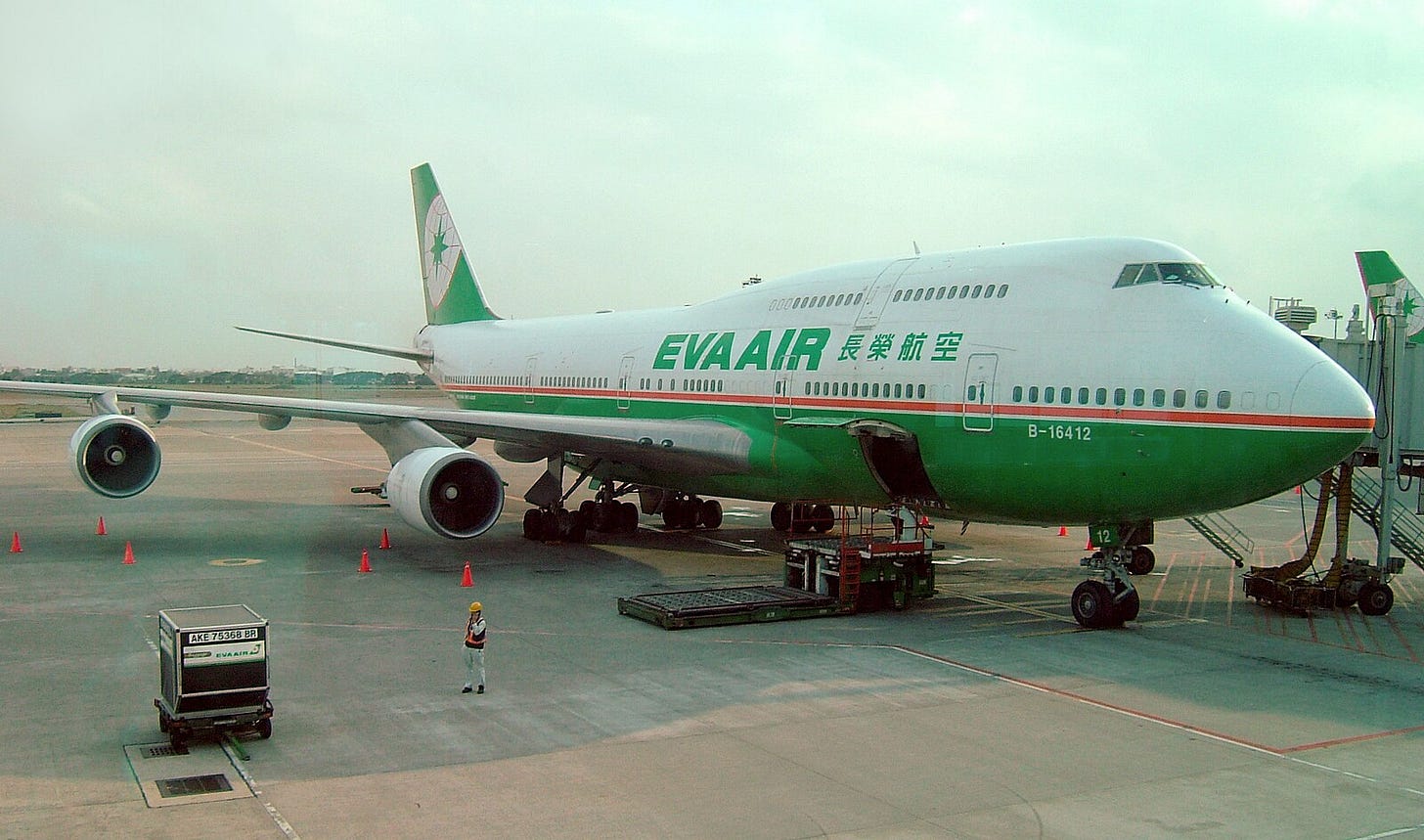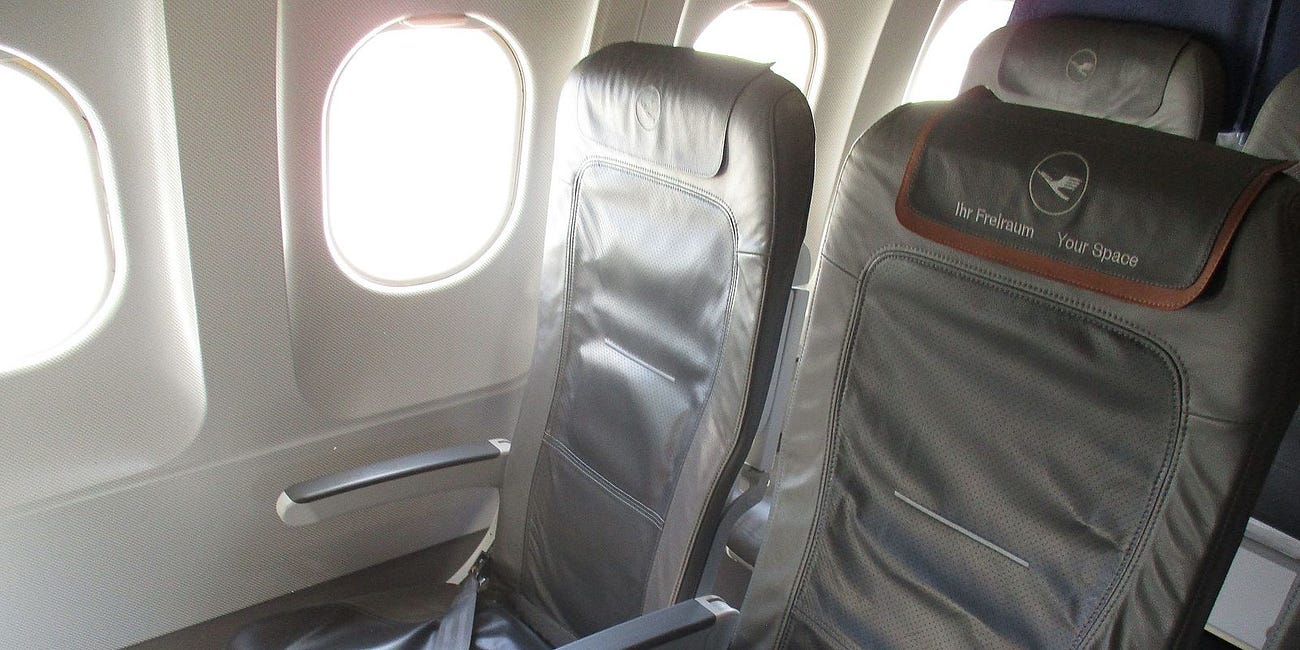How premium economy took over the skies
Spacious enough to feel civilised, efficient enough to turn a profit — the Goldilocks cabin that's reshaping air travel
If you knew nothing about the economics of aviation1, you might reasonably assume that airlines generate the bulk of their revenue from the sale of economy class seats. On wide-body aircraft, these flimsy cardboard contraptions — sometimes narrower than the width of an average human shoulder — occupy more than half the aircraft.
Take the British Airways Boeing 777-200ER2, the sort of plane that would fly you from London to New York, Mumbai or Singapore. It holds eight first class seats, 49 in business, 40 in premium economy and a mammoth 140 in economy, representing 60% of all seats on board.
Of course, the reason *why* long haul economy travel is an exercise in maintaining one’s dignity in the face of mild disrespect is that airlines do not make much money from it. As far as the typical chief commercial officer is concerned, the unwashed hordes at the back of the plane — replete with their tracksuit bottoms and neck pillows — are essentially providing little more than ballast.
So, are first and business class the most profitable cabins? Actually, no. They are certainly home to the most expensive seats on the plane. A decent rule of thumb is that fares double as you ascend the class pyramid. So if an economy ticket costs, say, £750 return, premium economy might fetch £1,500, business £3,000 and first class £6,000. But it is all about space.
Forget Sandbanks on England’s south coast, The Bishops Avenue in North London or Billionaire’s Row off New York’s Central Park: the most expensive real estate on Earth can be found in the air. And that is where premium economy comes into its own.
Take British Airways’ Boeing 777 on a random off-peak return from London to Singapore:
Economy: 3-4-3 configuration | Pitch: 31 inches | Price: £503
Premium economy: 2-4-2 configuration | Pitch: 38 inches | Price: £1,679
Business: 1-2-1 configuration | Pitch: 72 inches | Price: £3,386
First: 1-2-1 configuration | Pitch: 78 inches | Price: £4,626
First and business class may bring in more revenue, but they also take up a heck of a lot more space and — critically for a flying machine — weight. Of course, that is before you begin to consider the cost of superior service, food, ground experience and other soft product offerings. Meanwhile, premium economy seats are only marginally larger than those in economy, yet in this case command more than three times the price3.
It is not for nothing that Harry Hohmeister, then head of commercial passenger airlines at Lufthansa Group, has been quoted as calling premium economy a “money-generating machine” which brings in 33% more revenue per square foot than economy and 6% more than business class. An extraordinary statement about an industry with famously narrow profit margins.
What makes this all the more remarkable is that premium economy is a relatively modern phenomenon. Taiwanese carrier EVA was the first to introduce an intermediary class between economy and business in 1991, which it placed in the nose of its Boeing 747-400. Virgin Atlantic followed in 1992, and by the mid-2010s, the cabin was a regular feature across the skies.
Interestingly, the Middle Eastern airlines, which have come to dominate a large share of global traffic, were late adopters. For years, Emirates President, Sir Tim Clark, dismissed the cabin, fearing it would cannibalise its business class offer. That is, travellers would book down a class rather than up. Those fears proved misplaced. Since its introduction in August 2022, the cabin has become the airline’s most profitable. In fact, demand is so strong that points redemptions have been restricted.
A few miscellaneous observations. First, not all premium economy cabins are created equal. Some airlines treat it as little more than economy plus (e.g. no dedicated check-in lane or superior meals) while others make an effort to elevate the experience with pre-departure Prosecco and amenity kits.
Second, the development of the cabin has helped ease the post-Covid losses from reduced corporate travel, as airlines pivot to tourists prepared to pay a lot more for a little extra comfort. And third, despite my snarkiness, these seats are *much* better than intra-European business class.
Why is European business class so rubbish?
You can picture it now. The high-definition television screen. The ultra-luxurious bedding. And, most of all, that apotheosis of late-modernity: the fully flat bed. Business class is not simply a more comfortable way of flying. It is an entirely different mode of transport. The problem is that not all bu…
In many ways, premium economy has become the airline industry’s Goldilocks zone — spacious enough to feel civilised, efficient enough to turn a profit. In an industry defined by razor-thin margins, it is the rare upgrade that truly pays for itself.
That is, you are a normal person with a life
My favourite statistic in all of aviation is that the diameter of General Electric engines on the Boeing 777 is as wide as the entire fuselage (passenger cabin) of the Boeing 737
And still do not grant you entry to an airport lounge








I will soon do a 'once in a lifetime' trip by travelling with Singapore Airlines premium economy. Leg room is not much more but the seats look better but you can have a row of two seats with priority boarding and exiting and you can book meals two days before from an expanded menu. There are some other smaller benefits, too, such as proper noise cancelling headphones.
Worth it? Well, it's a lot more expensive, so just the one time for me, but I have researched Singapore Airlines premium economy a lot and I think and hope that it will be.